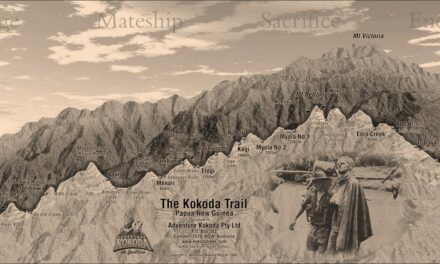KEY FACTS
1992:
Fewer than 100 Australians trekked Kokoda prior to 1992 – no income was generated for local subsistence villagers.
2008:
5621 Australians trekked Kokoda – generating approximately $3 million (K7.8 million) directly into village economies (wages, campsite fees, village purchases).
2009:
DFAT-Environment assumed control of the Kokoda Trail via a ‘Kokoda Initiative’.
Trekker numbers have since declined by 46% which has resulted in a cumulative loss of $19.7 million for village communities in the form of foregone wages, campsite fees and local purchases.
Preamble
Interest in the Kokoda Trail lay dormant for 50 years until Paul Keating became the first Australian Prime Minister to visit the area in 1992. It was heightened with the opening of a significant memorial by Prime Minister John Howard on the 60th anniversary of the battle of Isurava in 2002.

A proposal to establish an $8 billion (K28 billion) gold and copper mine on the southern section of the trail in 2006 saw the Australian Government react by establishing a Joint Understanding with the PNG Government to develop a case for a World Heritage Listing for the Owen Stanley Ranges. The agreement was framed around the need to protect the Brown River water catchment area on the Trail as a possible water and hydro source for Port Moresby.
Responsibility was allocated to the Department of Environment and Heritage as it was responsible for World Heritage listings as well as our Register of Overseas Heritage Sites. ‘Heritage’ was later removed from its title as the department was later transformed to include Water, Sustainability, Energy, Population and Communities.
For some inexplicable reason the Department of Veterans Affairs (DVA) – which is the custodian of our wartime heritage via its agencies – the Australian War Memorial (AWM) and Office of Australian War Graves – was not included in the Joint Understanding.
Environment assumed control of the Kokoda Trail in 2009. Responsibility was transferred to DFAT PNG in a reshuffle of responsibilities in 2015 – however there were no personnel, policy, or operational changes as environment officials were retained in their positions.
Since then the Kokoda Trail has been managed as an environment issue by an aid-funded Government bureaucracy rather than as a tourism enterprise on a commercial basis. The military heritage of the trail was relegated.
Chronology of Facts
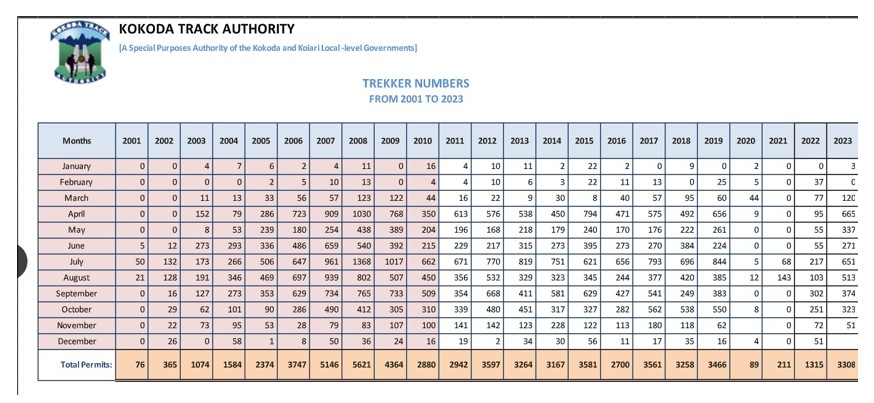
2001
- In the decades since the war fewer than 100 trekkers crossed the Kokoda Trail each year. The combined annual income of subsistence villages along the trail was estimated to be in the region of K60,000 in the 1990s.
- Media interest in the 50th and 60th anniversaries of the Kokoda campaign saw trekker numbers increase dramatically from 76 in 2001 to a peak of 5,621 in 2008.
2004
- The PNG Government established the Kokoda Track (Special Purpose) Authority[i] (KTA) as a statutory body for the Kokoda and Koiari Rural Local-level Governments. Their primary role was to manage the emerging trekking industry to ensure villages along the trail received a fair share of benefits from it. Warren Bartlett, a former Kiap living in PNG, was appointed CEO on a salary of $12,500 (PNGK25,000). A part-time assistant was also engaged.
2006:
- A proposal to mine the US$8 billion gold and copper deposit on the southern section of the Trail resulted in an Australian Government offer to assist the PNG Government develop a case for a World Heritage listing for the Owen Stanley Ranges.
2007:
- The Department of Environment and Heritage was reorganised as the Department of Environment and Water Resources.
- Environment officials and advisors were dispatched to PNG to familiarise themselves with the task of achieving a World Heritage listing for the Owen Stanley Ranges.
- They were followed by a conga-line of consultants to advise Canberra on management, social, cultural, and environment issues along the Trail. Numerous stakeholder forums were conducted in Australia and PNG.
- For reasons known only to environment officials they did not conduct any workshops/forums with landowner communities in villages along the trail to allow for direct consultation with their communities. Advice provided by experienced trek operators who had been engaged with villagers for almost two decades before their arrival was ignored.
2008:
- The Department of Environment and Water Resources was reorganised as the Department of Environment, Water, Heritage, and Arts (DEWHA).
- This created a departmental anomaly with DVA-DFAT being responsible for Australia’s WW1 heritage at Gallipoli and the Western Front, and DEWHA-DFAT being responsible for our WW11 heritage at Kokoda and the Pacific.
- A Joint Understanding covering ‘the sustainable development of communities along the Kokoda Track corridor, and protection and sustainable use of natural and cultural resources of the broader Owen Stanley region’ was signed by both governments in Madang on 23 April 2008.
- Military heritage is not a consideration for a World Heritage listing so it did not rate a mention in the Joint Understanding which noted that ‘The Owen Stanley Ranges are one of PNG’s major carbon stores and will be assessed along with other locations as potential sites for demonstration Reduced Emissions from Deforestation and Degradation (REDD) activities within the Papua New Guinea-Australia Forest Carbon Partnership’.
- DEWHA1F[i] assumed control of the Kokoda tourism. An Australian official, without any prior experience in PNG, was appointed CEO with a multimillion-dollar aid budget and a 10-fold increase in staff.
2009:
- Responsibility for development along the Kokoda Trail was divided between AusAID, which initiated a ‘Kokoda Development Program’, and DEWHA which initiated a ‘Kokoda Initiative’. Both programs were focused on Kokoda but there was little coordination as they were responsible to different Departments in Canberra. Neither organisation saw fit to consult with local villagers or experienced trek operators – and there was little evidence of them consulting with each other.
- Soon after a $1.5 million (K3.9 million) ‘Village Livelihoods Project’ conceived by DEWHA, without any consultation with the Department of Community Development in PNG, or the Kokoda Track Authority, was imposed with the aim of assisting local villagers to earn additional income from trekkers. The program failed because it did not include consultation with trek operators who generate the income for Kokoda tourism. No additional income was earned by villagers and no additional crops were produced from local gardens to meet trekkers needs. When the failures became apparent it was quietly shelved.
- DEWHA officials then extended the definition of the Kokoda Trail to the ‘Kokoda Track Corridor’ – and later to the ‘Kokoda Track Region’ which then included areas further afield such as Sirinumu Dam on the South Coast and the beach-heads of Buna and Gona on the North Coast. This subtle rebadging provided a smorgasbord of opportunity for Canberra based officials, academics and consultants involved in social mapping, gender equity studies, capacity building, mentoring and social inclusion.
2010:
- DEWHA was rebadged as the Department of Sustainability, Environment, Water, Population, and Communities (DSEWPC). Heritage was removed from their title however the role of environment officials in PNG was not affected.
2011:
- A Strategic Plan2F[i] developed by PNG based DSEWPC officials for the period 2012 – 2015 comprised 5 strategies and 33 objectives. The plan was once again developed without consultation with experienced Kokoda trek operators.
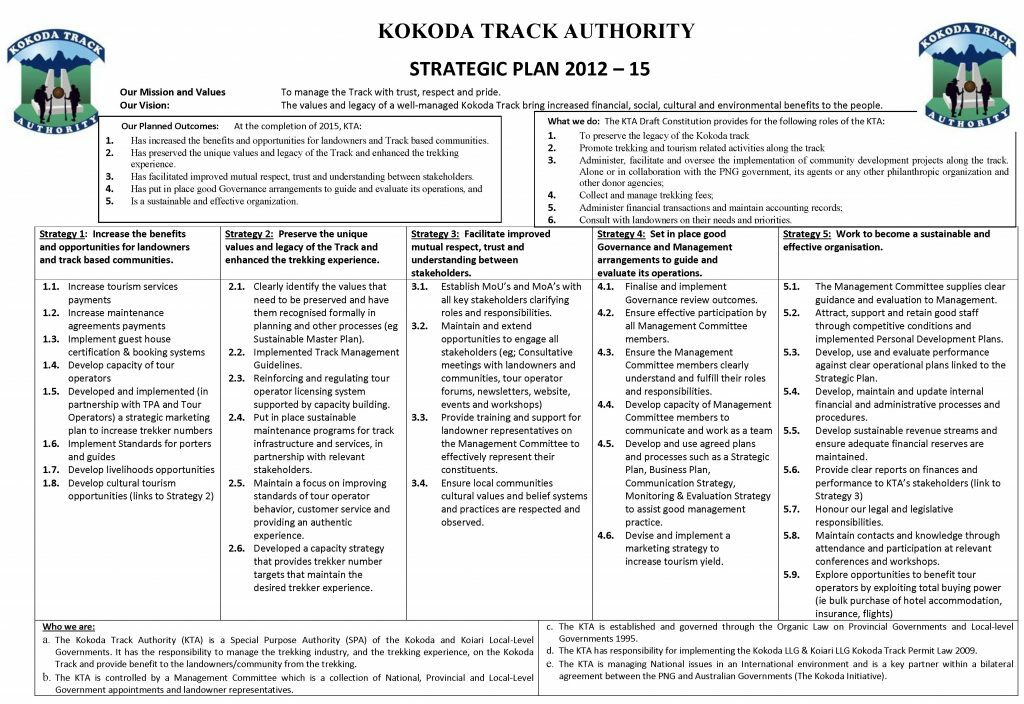
Not one of the 5 strategies or any of the 33 objectives was achieved! No follow-up strategic plan has been developed since then. Nobody was held accountable.
2012:
- DSEWPC transferred responsibility for the management of the trail to the PNG Department of Conservation, Environment and Climate Change without having developed a single management protocol. No legislation had been developed. No local landowner groups had been incorporated. No dispute resolution mechanisms had been put in place. No due diligence systems were introduced for licensing trek operators. No village workshops had been conducted. Not a single campsite was certified. Not a single toilet along the entire trail met the most basic of hygiene standards. No audited financial reports were ever published. No campsite booking system or trek itinerary management systems were introduced.
- Trekker numbers and income earning opportunities for local village communities declined significantly as a result of these management deficiencies under their watch.
2014:
- DSEWPC was reorganised into the Department of Heritage and Water (DHW) and later as the Department of Environment (DoE) with the election of the Coalition Government.
- The ‘Kokoda Development Program’ and the ‘Kokoda Initiative’ were amalgamated within DFAT PNG under the watch of the Minister for International Aid and the Pacific. There were no staff changes – environment officials recruited by DEWHA/DSEWPC/DHW continued in their roles in pursuit of a World Heritage listing for the Kokoda Trail without interruption.
2015:
- Australian World Heritage expert, Dr Peter Hitchcock AM exposed the fallacy of achieving a World Heritage Listing3F[i]: ‘Given the on-going threat to heritage values by mining and other development activities, no part of the Kokoda Track and Owen Stanley Ranges Tentative Listed area should be considered for formal nomination as a World Heritage area until such time as an adequate extent of high value areas is formally protected. Given this prerequisite, it may be years before a suitable tract of land is protected and worth considering for World Heritage nomination.’
- Environment-DFAT produced a ‘Master Plan for the Kokoda Trail’ based on three pillars: The Track – The People – The Environment.4F[ii] ‘Pilgrimage’, which is the core reason Australians pay to trek across it, was excluded from their plan by the Kokoda Initiative.
- The word ‘mateship’ was replaced with ‘friendship’ in the official agreement for the Kokoda Trail between Australia and PNG5F[iii].
2017:
- The PNG Government announced a K600 million Edevu Hydro Project on the Brown River6F[i] to meet the future water and power needs for Port Moresby. The project, to be developed by the China Gezhouba Group Corporation and the East Vision Group, was scheduled for completion in 2020.
- The Edevu Hydro Project has negated the need for a World Heritage listing to protect the Brown River Catchment Area.
- The PNG Prime Minister Peter O’Neill ordered a review of the KTA due to the dysfunction of the management systems put in place by DEWHA/DSEWPC/DWH/DoE/DEE officials.
2019:
- The 2019 Annual Report of Environment-DFAT PNG7F[i] focused on issues relating to gender equity, access for people with disabilities, and social inclusion along the trail. There is no mention of the need for a Military Heritage Interpretation Plan or sustainable economic development for local villagers.
- COVID-19 resulted in the shutdown of the Kokoda trekking industry and the evacuation of Australian officials from PNG.
- No financial reserves had been established to support local villagers engaged in the Kokoda trekking industry in the event of an emergency during the period 2009-2019.
- No financial reports were ever published by the KTA under DEWHAs watch which is in breach of the PNG Investment Promotion Authority Act.
- No plans were established to provide villagers with interim employment opportunities re the siting and development of campsites and trail maintenance to meet new social distancing and hygiene criteria that will apply post Covid-19.
- No action was initiated to identify-establish Incorporated Landowner Groups (ILGs) across the trail as a means of transferring ownership of Kokoda tourism to them.
- The Covid pandemic caused trekking to cease and exposed the flaws of a management system which made no provision for any sort of contingency to assist villager communities.
2019-2022
DFAT used the cover of the pandemic to draft a new ‘Kokoda Track Management Authority Act‘ which disenfranchises customary landowners from membership of a new Board; extends the gazetted boundaries of the Kokoda Trail to include Sirinumu Dam on the south coast, a large chunk of the Owen Stanley Ranges in the centre and the beach-head areas on the north coast. It will ensure that PNGs most popular tourism destination, i.e., the Kokoda Trail, is managed as an environmental resource for the benefit of aid-funded officials and consultants in the areas of anthropology, archeology and other forms of social-engineering rather than as a tourism resource on a commercial basis for the benefit of landowner communities across the Trail.
Of more concern is the fact that the proposed Bill was developed by an Australian official, Mark Nizette MBE, in Australia, without any consultation with the customary landowners across the Trail or Kokoda tour operators who generate the income for the industry.
Summary of Australian Government Management Outcomes for the Kokoda Trail: 2008-2020
- During the period 2004 – 2008, under PNG local management, trekker numbers increased by 255% from 1,584 to 5,621.
- Under Australian Government administration via DEWHA/DSEWPC (2008-2012) trekker numbers decreased by 36% from 5,621 to 3,597 despite a 10-fold increase in staff and a multimillion-dollar Aid budget.
- This decline has continued with a further decrease of 16% from 3597 in 2013 to 3033 in 2018.
- There is not a single management protocol in place for the Kokoda tourism industry.
- The overall decline in trekker numbers as a result of the management system put in place by Environment-DFAT officials in PNG has resulted in an estimated loss of $20 million (K50 million) in tourism revenue for PNG; a loss of 70,000 working days for PNG guides and carriers; and a loss of $580,000 (K1.5 million) for campsite owners along the trail.
Kokoda Trail Military Heritage Factors
DVA-DFAT is responsible for Australia’s WW1 military heritage at Gallipoli and the Western Front.
Environment-DFAT PNG is responsible for our WW11 military heritage at Kokoda and the Pacific.
DVA is responsible for the Australian War Memorial (AWM) which is the custodian of Australia’s military heritage.
Papua and New Guinea were Australian mandated territories in 1942 and shoulpd therefore be included within DVAs charter.
For reasons known only to Environment-DFAT officials the AWM has been excluded from the process of developing a Military Heritage Master Plan for the Kokoda Trail over the past 15 years.
DVA was also excluded from the process of recruiting a National Military Heritage Advisor for DFAT in PNG.
DFAT PNG advertised the position during the peak Christmas-New Year holiday period from 22 December 2017 – 8 January 2018. The advertisement was restricted to a small number of institutions who were closed during the holiday period. Both the AWM and the RSL were excluded from the process of tendering for the position.
The successful applicant was a PNG based American anthropologist whose thesis for his Doctorate was ‘Ambivalent Empire” Indigenous and Colonial Historicities in the Trobriand Islands, 1832-1941’.
The American anthropologist had no prior military historical credentials which was evident in his ‘Kokoda Track Military Heritage Management Plan’8F[i] where he stated:
‘The Plan will also recognise the prominent roles of Japan and the USA in PNG’s war history, as well as the place of other nations, including the UK, India, Fiji, China, Korea, Taiwan, etc’.
Those familiar with our military history are aware that ‘the UK, India, Fiji, China, Korea, Taiwan, etc’ were not involved in the Kokoda campaign or any other campaigns in Papua or New Guinea during the war!
The plan itself was a paltry 16-page document (with a liberal use of graphics to achieve this) which lacked the detail required of a proper Military Heritage Plan. It provided no comfort that any real outcomes to protect, honour and interpret our wartime heritage across the Kokoda Trail would be achieved via that process.
It is also worthy of note that Environment-DFAT have failed to develop a single interpretive memorial along the Kokoda Trail since they assumed responsibility for it 15 years ago.
In early 2021 the Minister for Veterans Affairs accepted a Network Kokoda proposal to develop a Master Heritage Plan after Prime Minister Scott Morrison (who trekked across it in 2010) intervened. The Minister then announced a $10 million (K26 million) allocation to commemorate the 80th anniversary of the end of the war in PNG.
The project was hijacked under the cover of Covid and with the funds being directed to a ‘World War Galleries’ project at the National Museum and Art Gallery which has a low visitation rate – those who do visit are motivated by the diverse cultural history of the ‘land of a thousand tribes’.
The significance of the 80th anniversary of the Kokoda campaign was therefore ignored.
Lest We Forget indeed!
Conclusion
The military heritage of the Kokoda campaign, the physical challenge it presents, and the uncertainly of a journey to the ‘land of the unexpected’ are the prime motivators for Australians to trek across it.
Managing the Kokoda Trail as an environmental bureaucracy rather than as a tourism enterprise under the watch of the DFAT Kokoda Initiative has clearly failed.
Any taxpaer funds committed to anything associated with a ‘Kokoda Initiative’ should be required to satisfy the following criteria:
1) Will it enhance the military heritage value of the pilgrimage for the paying customers?
2) Will it create an economic opportunity for communities along the Trail?
3) Will it protect the environment?
Unfortunately, the military heritage of the Kokoda Trail has not featured as a priority with the DFAT funded ‘Kokoda Initiative’ since they assumed control of its management in 2009.
So, after 15 years in situ, a plethora of consultants’ reports, and more than $65 million (PNGK167 million) in taxpayer Aid funding there has been no action taken to engage an accredited Military Heritage Architect via the Australian War Memorial to develop a Military Heritage Master Plan for the Kokoda campaign.
Recommendation
Responsibility for the management of the Kokoda Trail in PNG be transferred from the Minister for Provincial and Local Level Government Affairs (and the influence of the aid-funded Minister for Environment, Conservation and Climate Change) to the Minister for Tourism, Arts and Culture.
DVA be the lead agency responsible for the protection, development, and interpretation of our military heritage of the Kokoda Trail.
A Joint Understanding for Commemoration be developed between Australia and PNG to identify, protect, honour and interpret our shared wartime heritage in Papua New Guinea.
Kokoda Day be proclaimed as a National Day of Commemoration in Australia and Papua New Guinea on the 3rd November each year.
MISMANAGEMENT INDICATORS
PUTRID TOILETS
Landowners across the Trail have never received any training of micro-finance assistance to build hygienic toilets or ablution facilities across the Trail. After 15 years, Port Moresby based, taxpayer-funded Australian environment officials responsible for managing the Trail have elected to ignore this most basic need for trekkers. As a result, many trekkers avoid them and ‘go bush‘ which is the worst of all environmental outcomes.
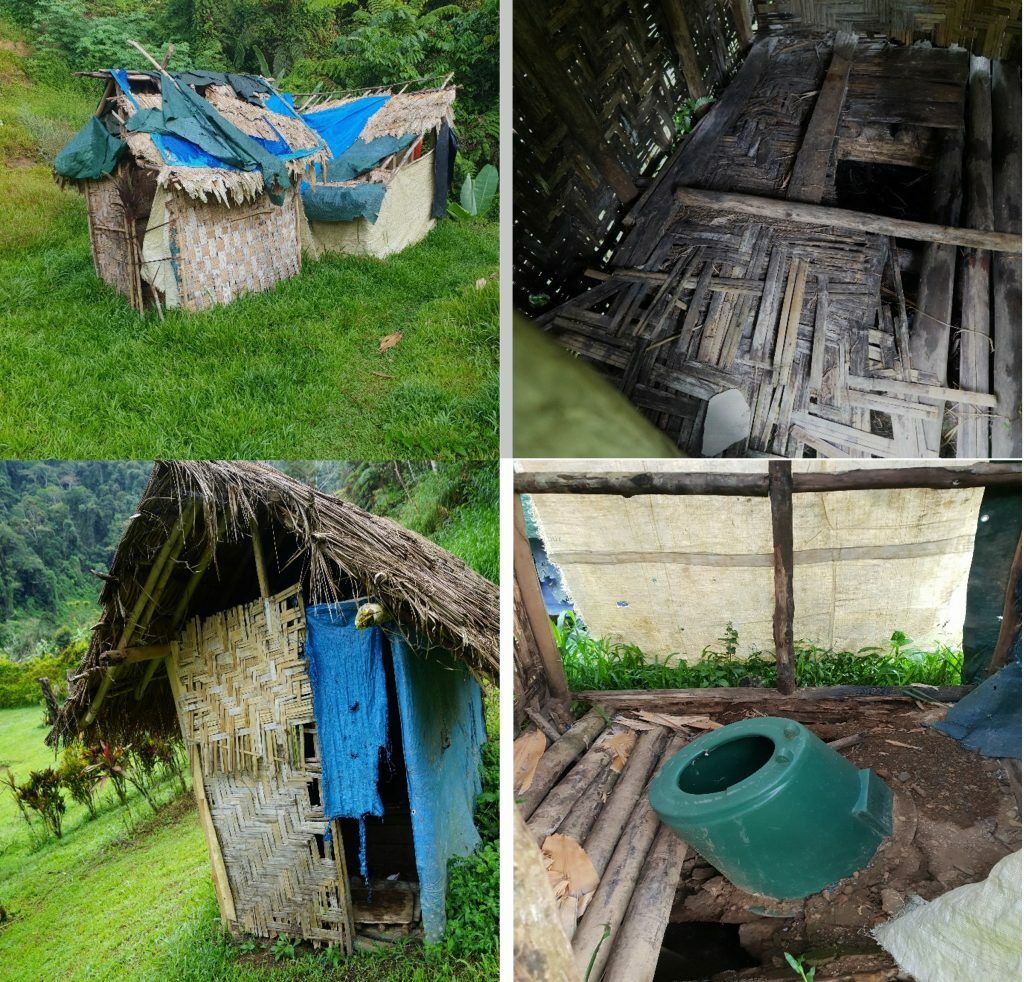

Feedback from female trekkers re toilets facilities across the Trail:
‘I don’t know how I can be constructive in my criticism here, but the smell was appalling!! I’m sure you have considered it but don’t they use lime or something in the Army which is supposed to help? Other than that they were as expected…. I suppose they were better than having to squat behind a bush, but only marginally’!
‘Ok, they really are they best they can be, and I have seen far worse. I was happy with no seat, but the smell was horrific in some of them. Seriously, it’s a horrible sensation vomiting while having a wee. I quick learnt to avoid the high usage ones. I don’t really see what more you can, other than have them relocated more frequently’.
‘Well each site you could write a story on. The first one I made an attempt but gee whiz it didn’t happen for me, going bush was great, room with a view and fresh. Latrines were good when it was raining’.
‘Ha Ha Ha…. Never lost my stomach contents but it was close…. gagged sometimes….. But it was all about Kokoda. Some of the funniest laughs I had with the girls were standing with a snap lock bag full of Loo paper outside the toilets.. (or smelly hole in the ground) with toilet paper up my nose…. (yes I think I am a princess)’.
I now appreciate a white bowl with flushing water and a button…… The funniest was when Cathy and Nicole had to do a Conga line to get me out of one of them. It’s a girl thing’.
‘It is a third world country.’
‘What else could you expect!’
‘You are in a poor country so I would not expect flushing toilets but some of the sites I think it would be easier to use a shovel’.
‘Some were better than others. Some were downright disgusting. Probably can expect too much more given they are shared with all and sundry’.
‘Like I mentioned, I couldn’t bring myself to use the facilities at Kokoda, due to the smell’
’They weren’t great, I always preferred ‘going bush’, less smell, and more solitude. Not sure if this is something that AK can really improve though’.
There is no excuse for this appalling standard along the trail in view of the fact that the Australian Government has invested $40 million in the Kokoda initiative over the past 5 years.
DFAT Kokoda Initiative officials should be called to account to explain why they have refused to invest in a single hygienic toilet for trekkers (taxpayers) anywhere acorss the Trail over the past 10-years?
UNPLANNED CAMPSITES
The failure to identify landowners and assist them in developing campsites with micro-finance initiatives led to a proliferation of unplanned sites in the hope that they would attract trekkers. When they were not used due to the lack of a trek itinerary management system they were abandoned and left to be reclaimed by the jungle which had been cleared to accommodate them.
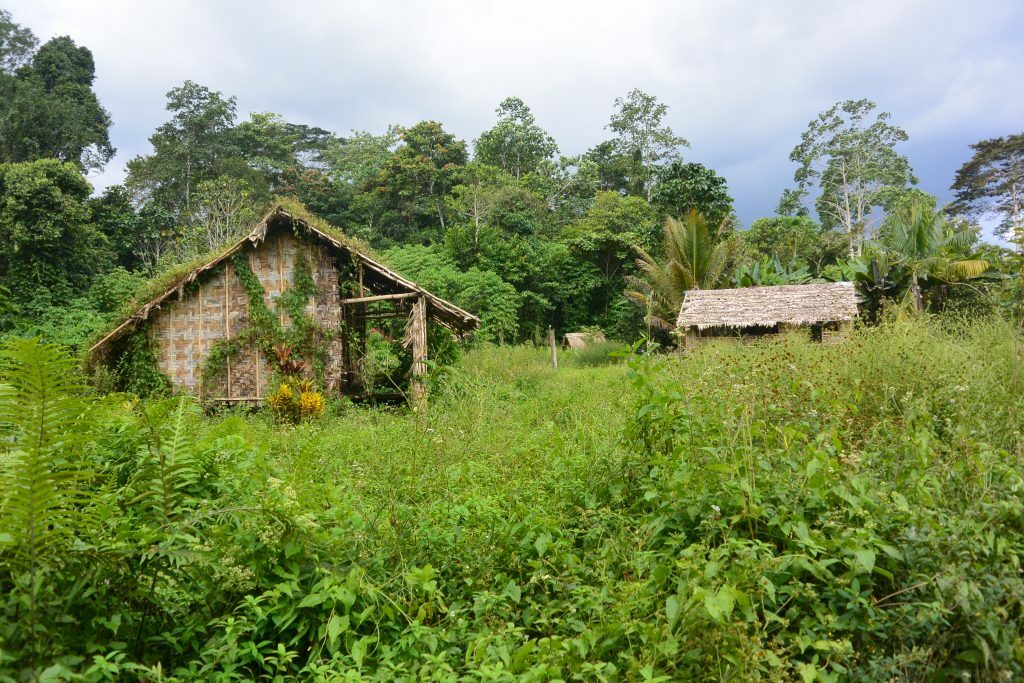
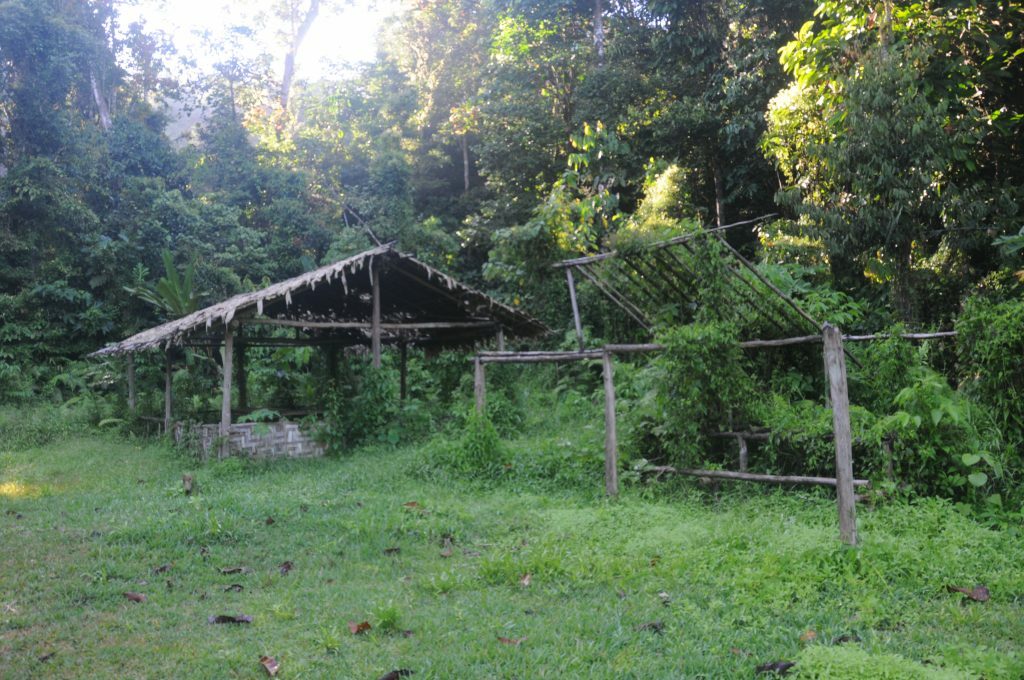
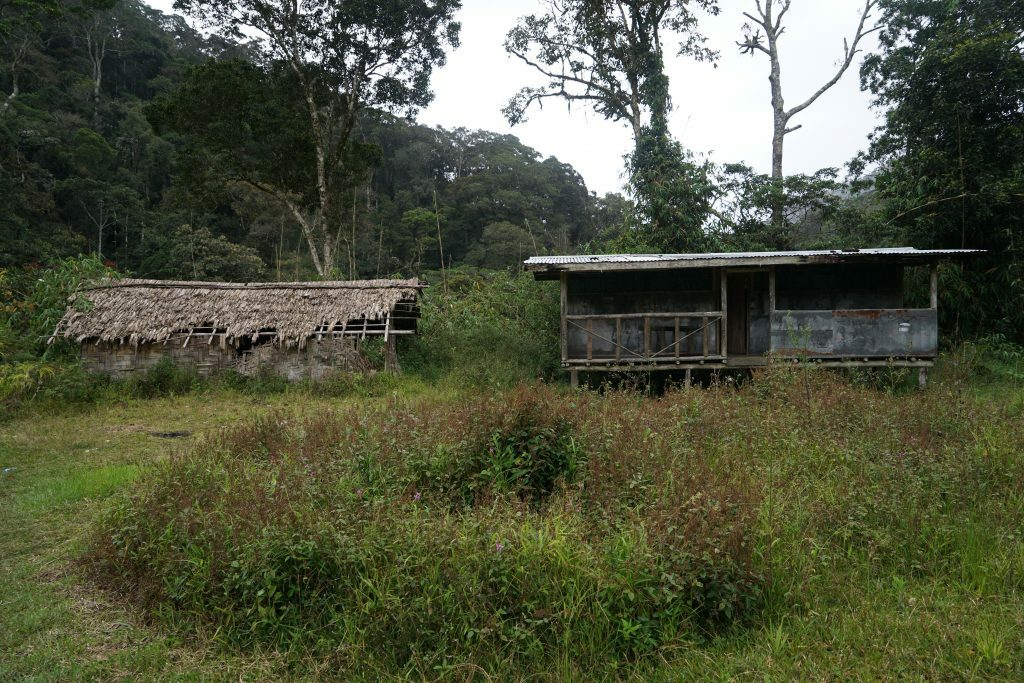
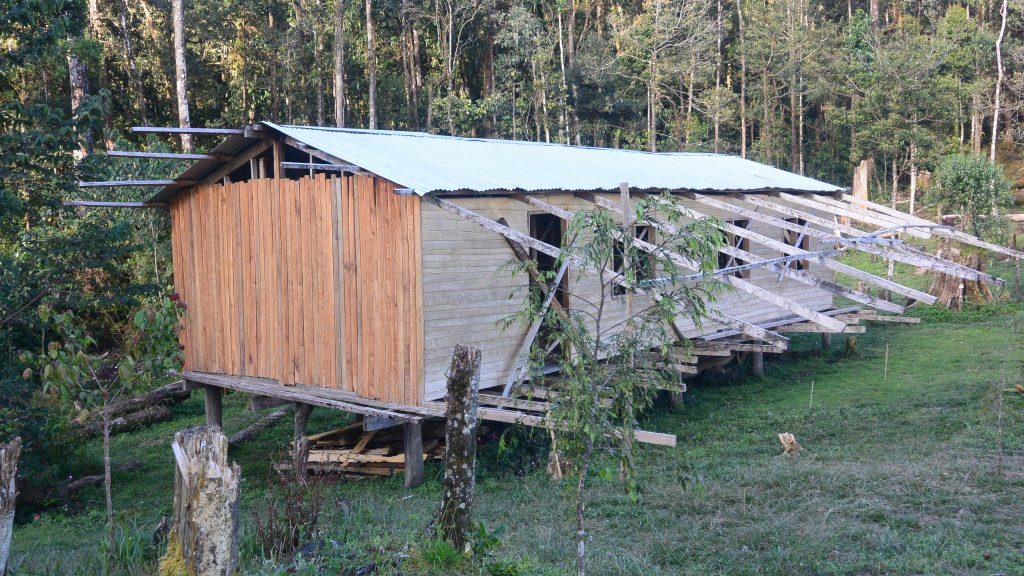
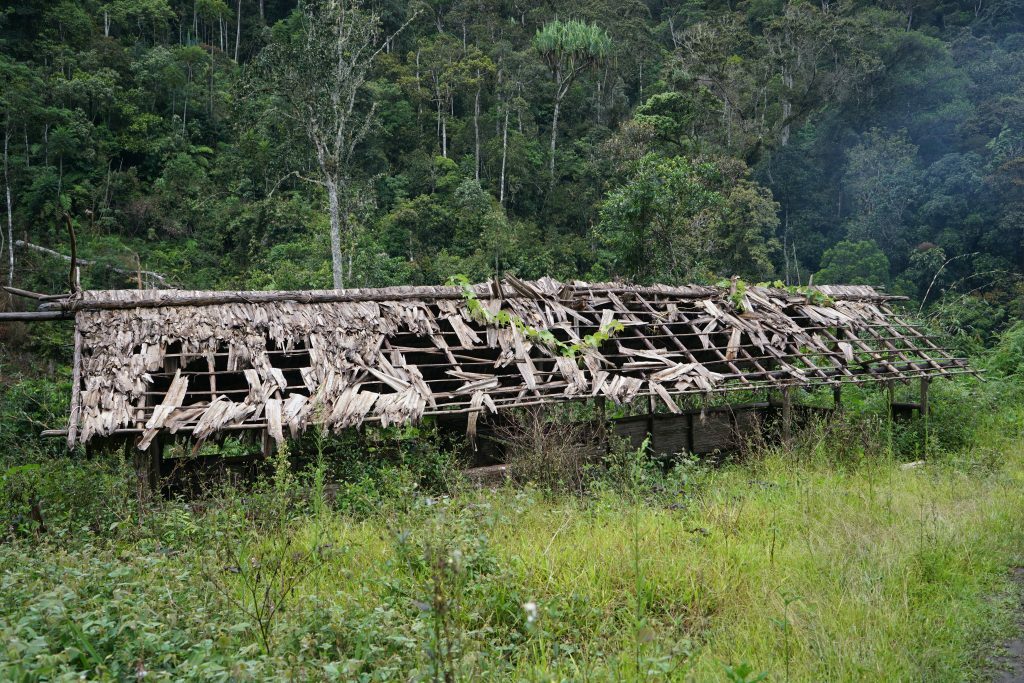
DFAT-Kokoda Initiative officials should be called to account for their failure to develop campsite management-development plan over the past 10 years.
LANDSLIDES
Landslides are common on the northern area of the Trail. Local villagers have adapted to them by re-routing tracks around the affected area for generations. However landslides can take months to address because the deskbound DFAT officials have failed to develop a rapid-reaction maintenance team to ensure safe passage for trekkers.
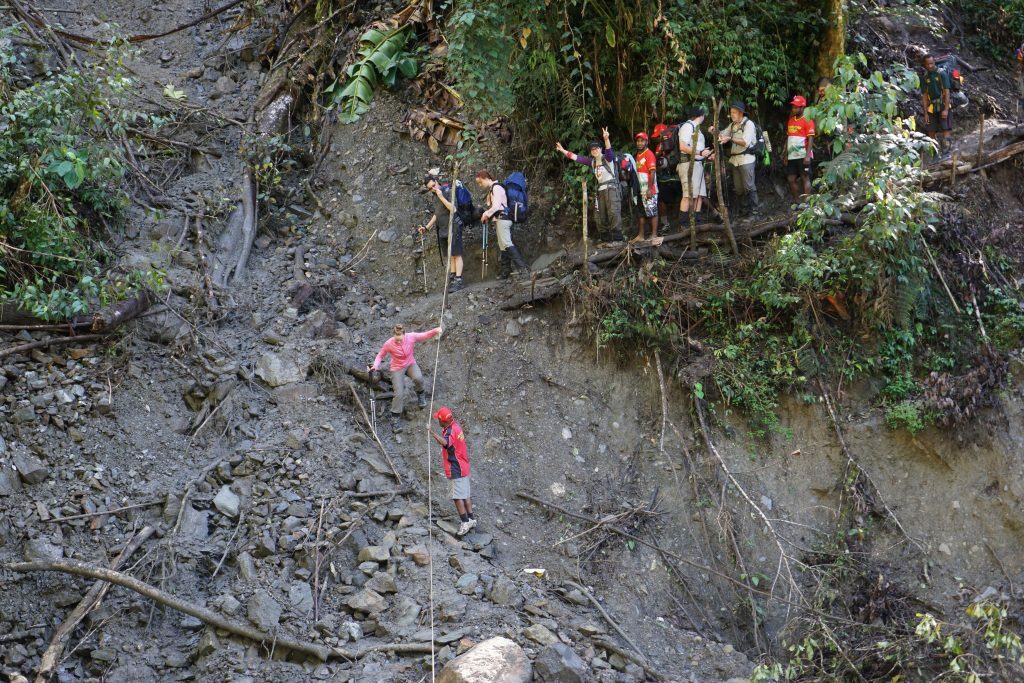
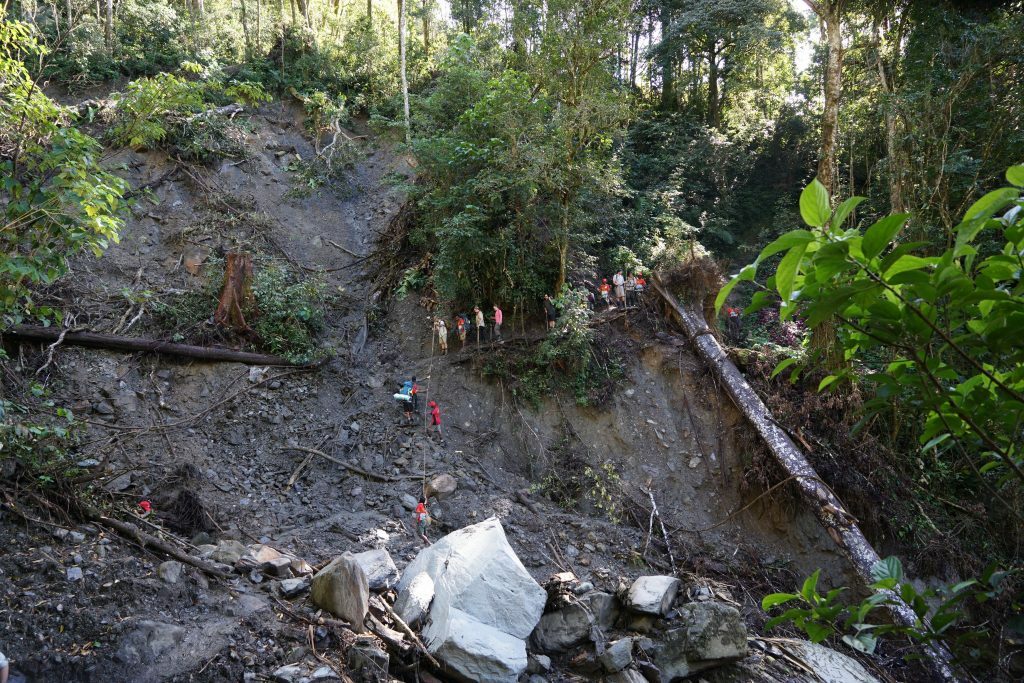

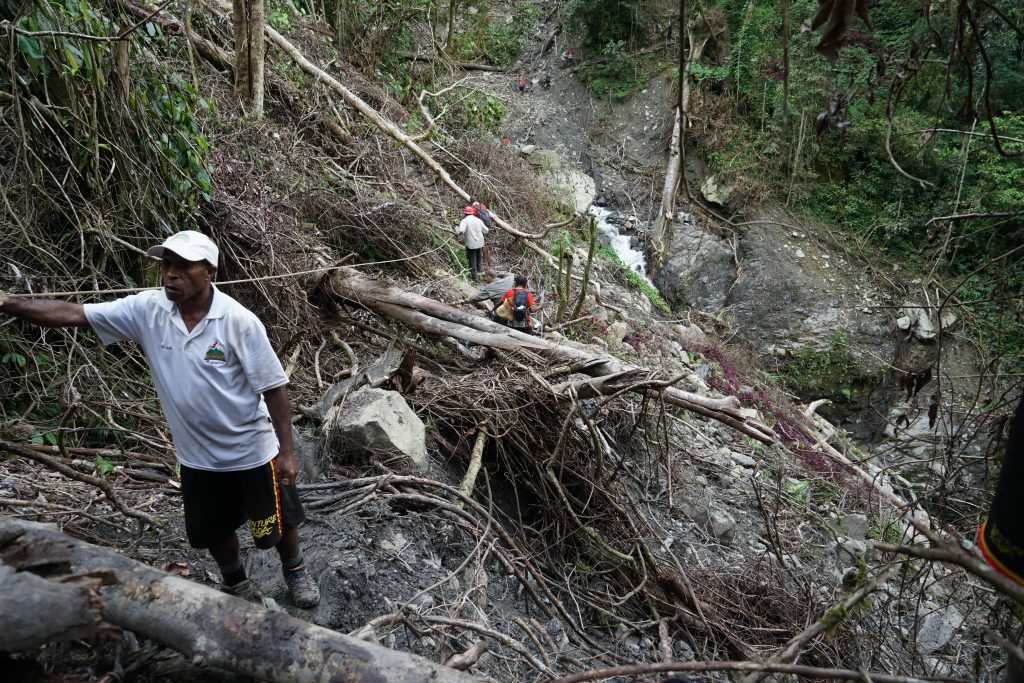
DFAT-Kokoda Initiatives should be called to account to explain their failure to develop village-based ready reaction teams to clear obstacles along the Trail and keep it safe.
PREVENTABLE EROSION
The failure to develop an effective trail maintenance plan is inexcusable. Areas affected by erosion are not easily accessible by helicopter so they are not sighted by deskbound environmental officials. One of the obvious solutions is to employ local landowner groups to cut single-file one-way north-south tracks and south-north tracks in critical areas to allow for regeneration. The management authority has also failed to engage trekking companies to provide environmental feedback to allow them to monitor the situation. The result is a lose-lose situation for the environment and a lose-lose situation for local job opportunities for landowner communities.
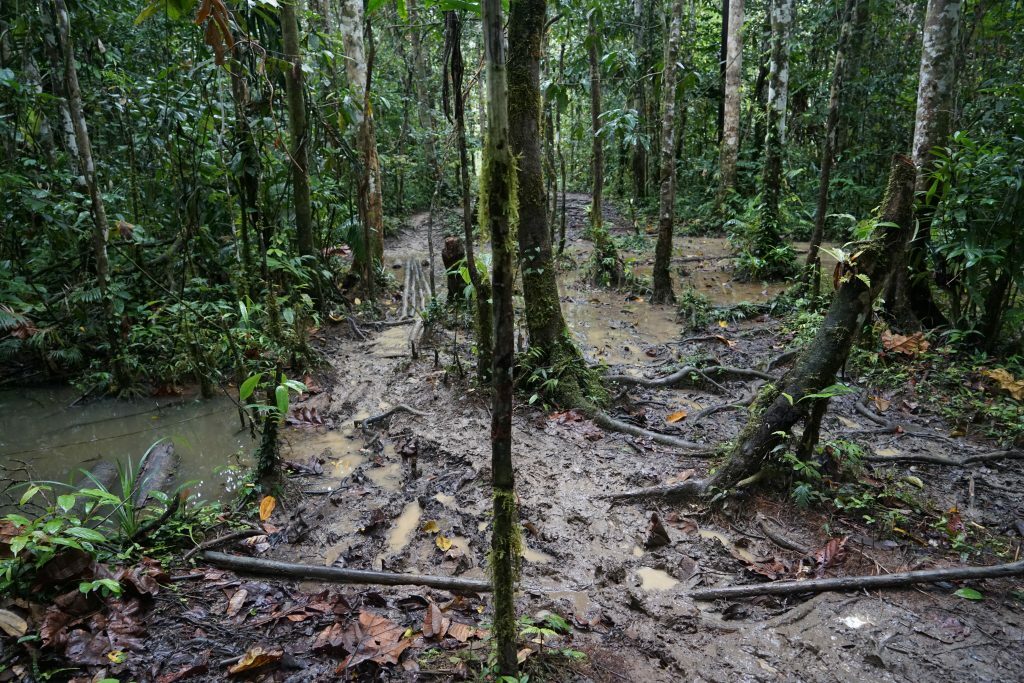

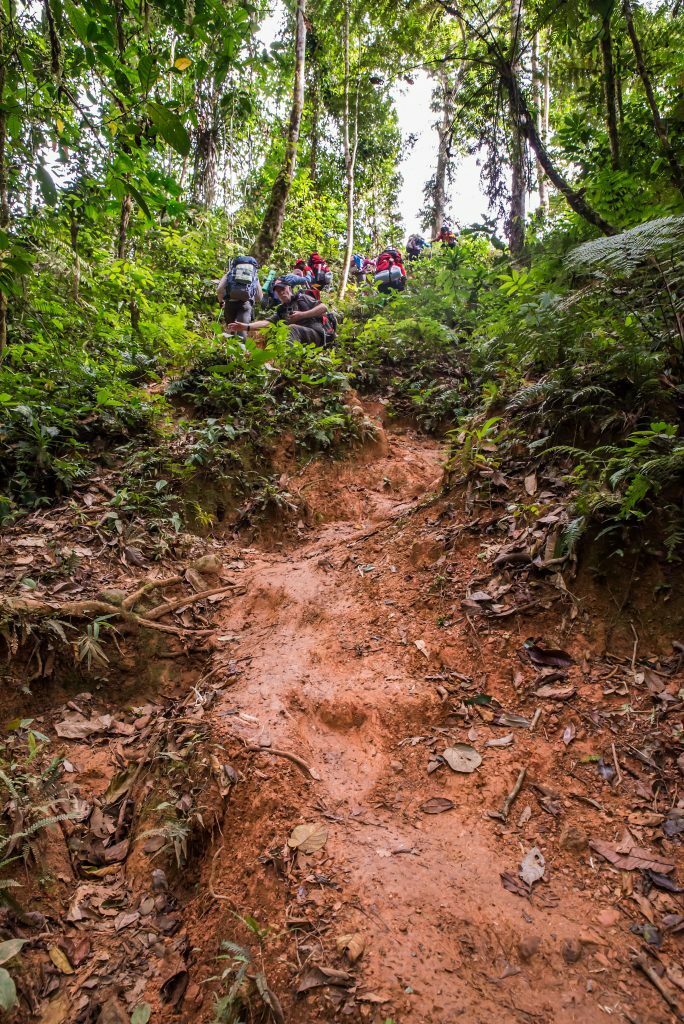
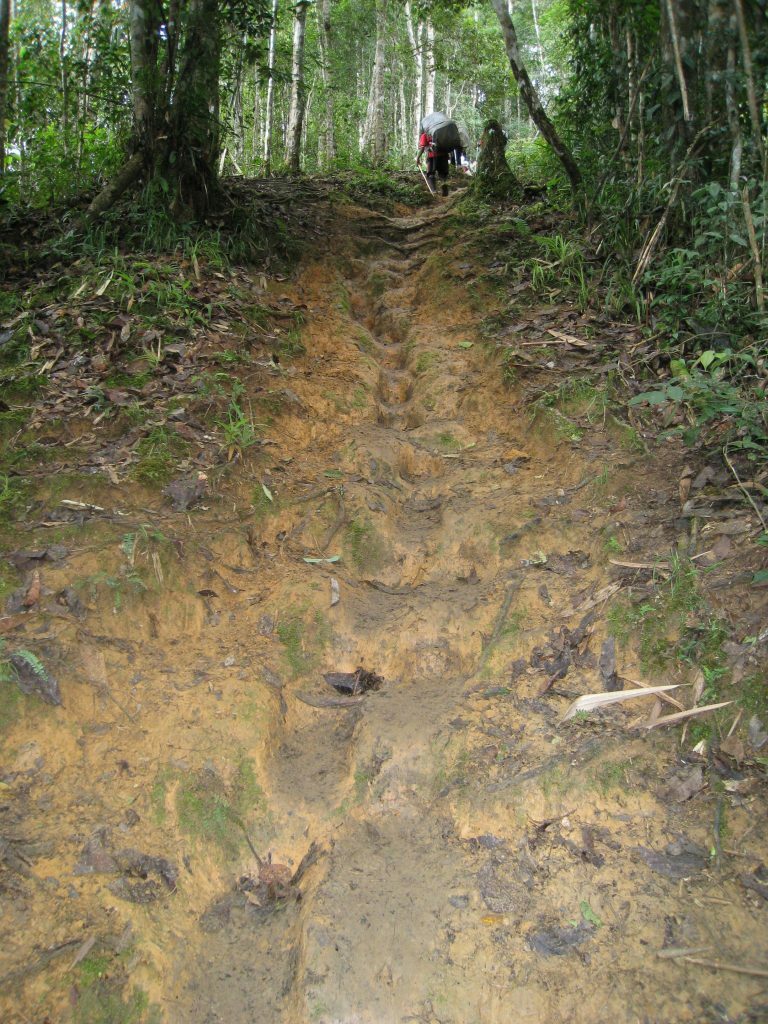

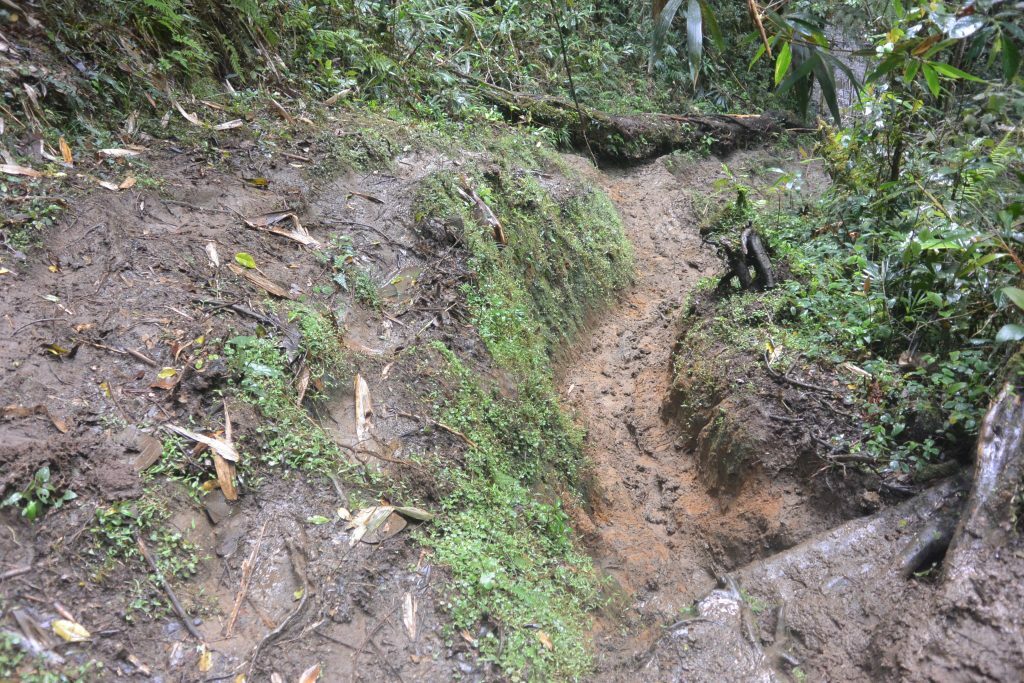
DFAT-Kokoda Initiative officials should be called on to account for their failure to develop a sustainable trail management plan which provides for local villagers to be employed to prevent erosion and why they have failed to engage trekking companies to provide feedback on works needed and works completed.
[i] https://www.academia.edu/37661061/KOKODA_TRACK_Military_Heritage_Management_Plan_Papua_New_Guinea_National_Museum_and_Art_Gallery
[i] 2019 Annual Review Report Papua New Guinea–Australia Governance Partnership Quality and Technical Assurance Group Final Report
[i] https://www.abc.net.au/news/2017-02-06/hydro-project-to-boost-port-moresbys-energy-supply/8245900
[i] https://www.sprep.org/attachments/VirLib/PNG/world-heritage-sites-png.pdf
[ii] Kokoda Initiative Master Plan by Trip Consultants August 2015
[iii] https://www.environment.gov.au/heritage/publications/papua-new-guinea-australia-joint-declaration-preservation-kokoda-track-region
[i] https://blog.kokodatreks.com/2020/03/09/kta-strategic-plan-2012-2015-fail/
[i] ‘Heritage’ was eventually dropped from the Department which was rebadged as the Department for Sustainability, Environment, Water, Population and Communities (DSEWPC)
[i] Special Purpose Authorities are established to serve the interests of landowners of Mining and Petroleum impact project areas. EMTV Report




